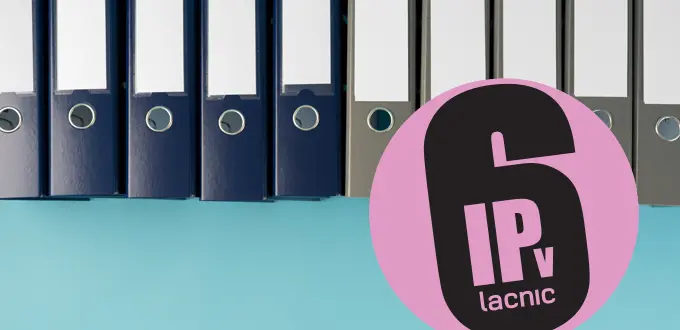Expanding the IPv6 Documentation Space
04/07/2024

Introduction and a bit of history
First, let’s talk a bit about the IP prefixes reserved for documentation. The goal of these prefixes is for them to be exclusively used in books, texts, examples, tutorials, and so on, and they are not routed on the Internet. However, their success has created greater needs, reminding me of a very wise saying: today’s problems are a result of yesterday’s solutions.
Second, something very interesting is happening within the IETF, specifically within the v6ops working group. Exactly 10 years ago, a group of professionals (myself included) attempted to expand the IPv6 documentation space[1]. Unfortunately, this attempt was unsuccessful.
Finally, today an Internet Draft (ID) is under discussion which we believe will become an RFC. Its name is “Expanding the IPv6 Documentation Space”, and it is a document we support and believe is necessary and important for the community. We also believe that it was better to revisit and revive the draft from 10 years ago, a perfectly valid mechanism within the IETF.
Are documentation prefixes necessary? Don’t private addresses serve the same purpose?
These are two different concepts, each addressing distinct problems. While they may sometimes be confused, each approach seeks to solve different issues.
Private addresses in IPv4 and Unique Local Address (ULA) in IPv6 are designed for use in internal networks. In other words, these IP addresses are assigned to the network and configured on our devices (i.e., computers, servers, printers, mobile phones, and others). In fact, it’s very likely that the computer you are using to read this article has a private address right now.
On the other hand, documentation IP addresses or prefixes are specifically intended for use in documents, magazines, online examples, labs, and other similar applications. These prefixes are crucial for ensuring clarity and consistency in topological documentation, without affecting network operation. For example, in the world of IPv6, any addressing you see in a document, video, or magazine is very likely part of the 2001:db8::/32 prefix.
(Free access, no subscription required)
Finally, neither private nor documentation prefixes should be routed on the Internet, nor should they be accepted, for example, on routers using BGP to connect to Internet providers.
For the remainder of this article, we will focus on documentation IP addresses, which is precisely the change that is coming to the world of IPv6.
About the current draft titled “Expanding the IPv6 Documentation Space”
This document was authored by Geoff Huston and Nick Buraglio. The first version was introduced in 2021 and it is currently on version 03, which will expire this 30 November. However, it is already in Last Call and is broadly supported by most of the community. We anticipate that it will soon become an Informational RFC.
The views expressed by the authors of this blog are their own and do not necessarily reflect the views of LACNIC.
